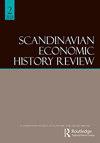市场增长、协调问题和控制——1807-1892年瑞典中东部围场的时机
IF 0.5
Q4 ECONOMICS
引用次数: 1
摘要
圈地运动是瑞典农业革命的重要组成部分。从1749年起,立法为Storskifte开放,减少了每个业主的地块数量,但没有涉及村庄的公共场地或住房结构。然而,恩斯基夫特(1803-1807)和拉加·斯基夫特(1827)的法令使露天系统的最终解散成为可能。根据Laga skifte立法,一个土地所有者申请圈地,可能会迫使整个村庄被圈地。尽管如此,这一过程甚至在19世纪90年代还没有完成。先前的研究强调了围栏对经济发展和/或作为收入再分配因素的重要性。然而,它并没有完全解释为什么一些村庄提前封闭,而另一些村庄则晚封闭。我们使用一个新构建的数据库来调查这个问题,该数据库包含Västmanland县的所有村庄。此外,通过使用Cox比例危险模型,对100个村庄的随机样本进行跟踪,以估计哪些因素加速或减速了封闭过程。主要结论是,所有权和成本因素的集中降低了圈地的概率,而复杂的土地利用模式和实际人均GDP增长增加了圈地概率。本文章由计算机程序翻译,如有差异,请以英文原文为准。
Market growth, coordination problems and control – the timing of enclosures in East Central Sweden 1807–1892
ABSTRACT The enclosure movement was a significant element of the agricultural revolution in Sweden. Legislation from 1749 onwards, opened up for Storskifte, which reduced the number of plots per owner, but did not touch the villages’ common field or housing structures. The edicts of Enskifte (1803–1807) and Laga skifte (1827), however, made possible the final dissolution of the open-field system. According to the Laga skifte legislation one single landowner applying for enclosure, could force the entire village to enclose. Nonetheless, the process was not complete even by the 1890s. Previous research has emphasised the importance of the enclosures for economic development and/or as a factor in income redistribution. It has, however, not fully explained why some villages enclosed early and others late. We investigate this question by using a newly constructed database containing all villages in the county of Västmanland. Furthermore, by using a Cox Proportional Hazards model, a random sample of 100 villages is followed over time to estimate which factors accelerated or decelerated the enclosure process. The major conclusions are that concentration of ownership and cost factors decreased the probability for enclosure while complex land-use patterns and real GDP-per capita growth increased the probability of enclosure.
求助全文
通过发布文献求助,成功后即可免费获取论文全文。
去求助
来源期刊

SCANDINAVIAN ECONOMIC HISTORY REVIEW
ECONOMICS-
CiteScore
1.60
自引率
16.70%
发文量
20
期刊介绍:
Scandinavian Economic History Review publishes articles and reviews in the broad field of Nordic economic, business and social history. The journal also publishes contributions from closely related fields, such as history of technology, maritime history and history of economic thought. Articles dealing with theoretical and methodological issues are also included. The editors aim to reflect contemporary research, thinking and debate in these fields, both within Scandinavia and more widely. The journal comprises a broad variety of aspects and approaches to economic and social history, ranging from macro economic history to business history, from quantitative to qualitative studies.
 求助内容:
求助内容: 应助结果提醒方式:
应助结果提醒方式:


